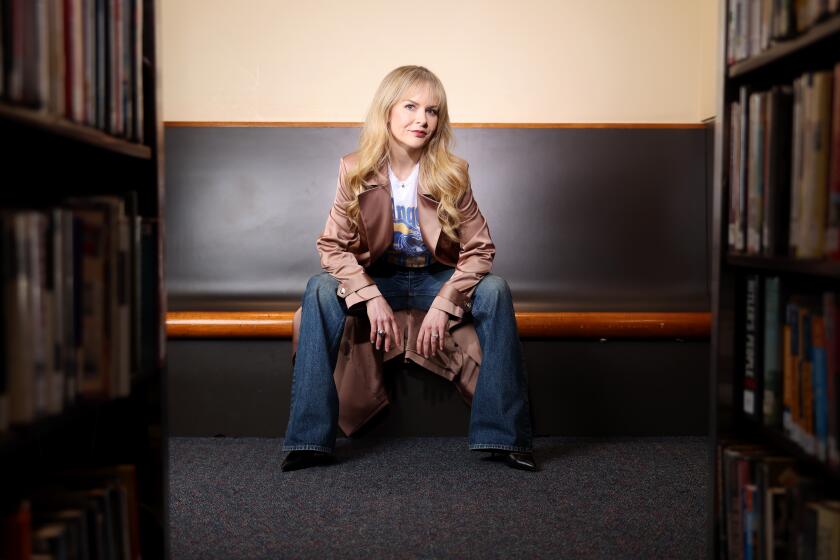Popular Yo-Yo Ma Makes Connections
- Share via
It is an oddity of the arts that they don’t always court well-off patrons with their best or most exclusive. Rather than offer a benefit audience--which paid as much as $500 a seat Thursday night--something new, unusual or, at least, a masterpiece, the Los Angeles Chamber Orchestra chose three lesser works by three of the most commonly heard composers and used as its draw the world’s most popular and peripatetic cellist. Yet the orchestra clearly knew what it was doing. UCLA’s Royce Hall was not only full, it was filled with a crowd genuinely eager for and alert to music, which is not always the case at such society concerts.
Of course, Yo-Yo Ma is popular for a reason. He is not only a great master of the cello but a social performer. Never still, he constantly interacts with members of the orchestra (almost as if he were playing with each one individually). He makes constant eye contact with the audience as well. And he showed great delight Thursday in an active, virtuosic give-and-take with LACO’s music director Jeffrey Kahane, with whom he clearly has a warm relationship. Yet give him a soulful solo passage, and he suddenly appears so engrossed with his cello that we become like voyeurs peeking in on his personal expression. Were he not the cellist he is, he could have become a spectacular air-traffic controller.
The program was potboiler, but with a point. In the first half, Kahane paired Tchaikovsky’s “Variations on a Rococo Theme” for solo cello and orchestra with Prokofiev’s “Classical” Symphony, as late Romantic and early 20th century Russians looking back to the Classical era. Later, with Beethoven’s Triple Concerto (in which Ma was joined by Kahane, conducting from the piano, and LACO concertmaster Margaret Batjer) came the real Classical thing.
The most intriguing aspect of Prokofiev’s slight symphony and the Tchaikovsky showpiece is not what they take from an earlier era but what they add to it from a later one. With a chamber orchestra, some of that tension is, however, automatically lost, and more of it was dispensed with by Kahane, who is, himself, a devoted Classicist. Whatever Haydnesque charm could be extracted from Prokofiev was. A Russian conductor, on the other hand, might have sought out Prokofiev’s bits of rude Modernist acid.
The Tchaikovsky, too, can be more effective with the rich plushness of a full orchestra. But, as compensation, Kahane took full advantage of his smaller forces to accommodate the breathtaking micromanagement of Ma’s playing. This is a piece the cellist long ago integrated into every fiber of his musical being, and he now finesses each second of the solo passages into something sensational. Ironically, Ma, who can be a characterless improviser in his crossover projects, becomes a downright impressive crossover artist in these variations, where, like a jazz player, he finds new implications in an old standard but does so while sticking to the music printed on the page.
Beethoven’s Triple Concerto is harder to make into something more than what it is. Written around the time of the “Eroica” Symphony and intended for the amusement of court musicians, it has an unusually tossed-off quality for Beethoven--a number of ideas in it would eventually turn up to far greater effect in works such as the “Egmont” Overture and the Fourth Piano Concerto. Still, the very idea of a concerto for three soloists does create a sense of occasion. The cello has the best part, and Ma played it beautifully and with great sensitivity to Batjer’s lyrical, less sensational style. Kahane sought in his playing and conducting a kind of all-purpose elegance.
*
All that was lacking, for such a special occasion, was a little drama and surprise. Happily, Steinway & Sons came to the rescue. At the end of the first movement, Kahane turned to the audience and said that even the most expensive cars break down. A key had stuck. Joking around, Ma waved his handkerchief inside the piano. That didn’t work, so a technician walked on stage. To the evident delight of the crowd--and with an effect not all that different from the Fluxus piano pieces, such as feeding hay to a piano, performed at the Getty’s David Tudor celebration last weekend--he began disassembling the keyboard. After about five minutes, it was fixed. And concert-goers--to hear all the talk afterward--got a memorable, one-of-a-kind experience after all.
More to Read
The biggest entertainment stories
Get our big stories about Hollywood, film, television, music, arts, culture and more right in your inbox as soon as they publish.
You may occasionally receive promotional content from the Los Angeles Times.











